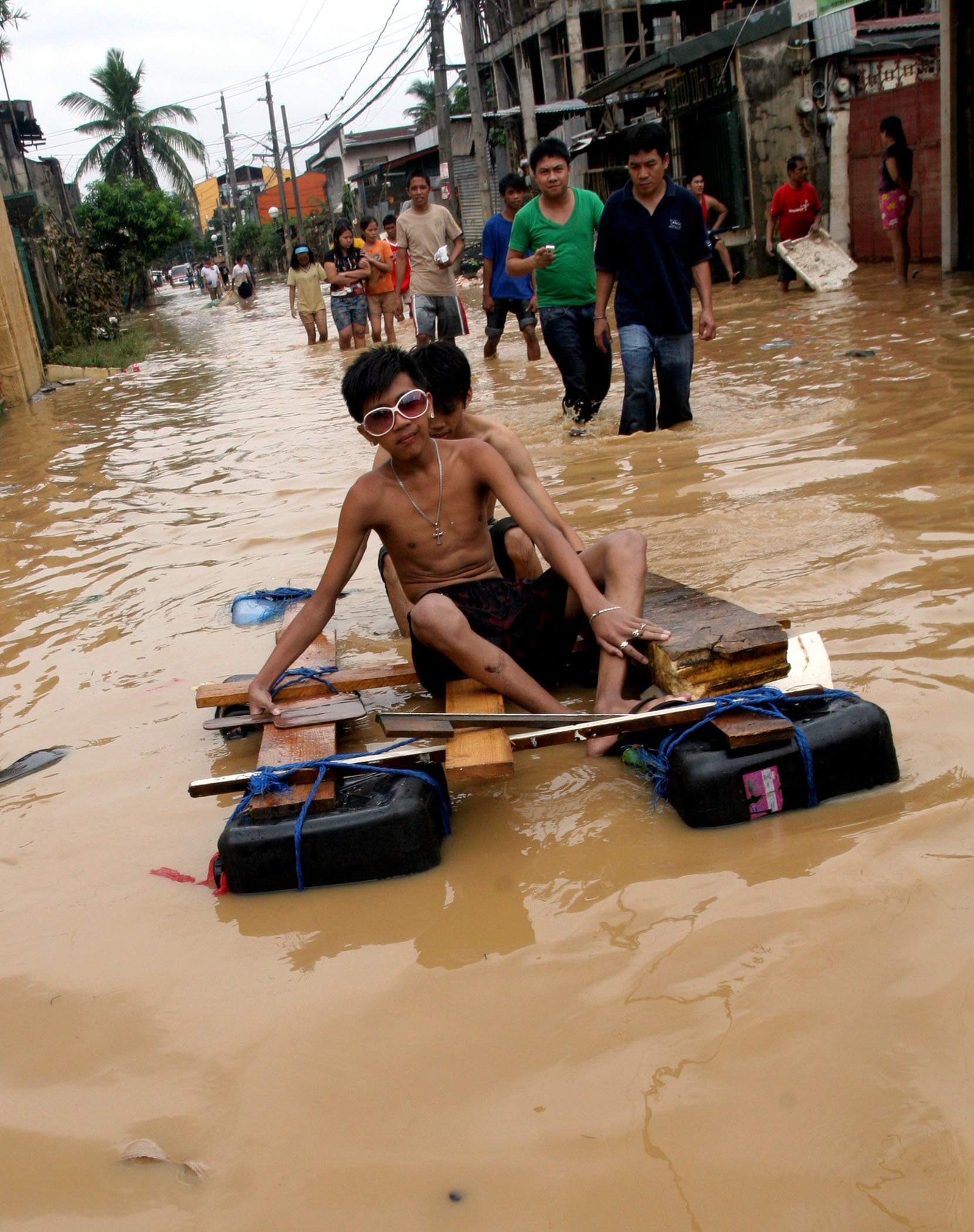In a report to emergency relief agencies, Health Secretary Francisco Duque said that as of 26 October, there were 2,158 confirmed cases of Leptospirosis infections, with 167 deaths reported by the National Epidemiology Centre.
With more than 120,000 people crammed into evacuation centres in Manila and outlying areas that are still submerged in putrid, stagnant water, Duque said the likelihood of more outbreaks was high.
The deaths linked to Leptospirosis - a bacterial infection caused by contact with water contaminated by rat and other animal urine - were in addition to the 929 people who died from devastation wrought by tropical storm Ketsana, which hit on 26 September, and Typhoon Parma, a week later. According to the National Disaster Coordinating Council (NDCC) , more than nine million people were affected by the two storms.
"There is a surge in the number of hospitalized cases of Leptospirosis from among the victims of recent typhoons who have [lost] … their homes," Duque said in a memorandum order issued last week to state-run hospitals to prioritize cases of the disease.
"Various local government units and hospitals have reported an increasing number of cases of Leptospirosis among communities that have been submerged in flood waters and from among those who have been transferred to evacuation sites,” it read.
Duque said the best preventive measure to combat the disease is to drain the flooded areas and force people to move - something that government is hard-pressed to do since many areas remain inundated and some families have returned to their partly submerged homes to prevent looting.
As a stop-gap measure, he said the health department had sent teams to provide antibiotics to those infected while at the same time seeking the help of the UN World Health Organization (WHO) in containing the outbreak.
Private hospitals have also agreed to take in patients that state-run hospitals can no longer accommodate, Duque said.
National epidemiology chief Eric Tayag said the antibiotics were meant to cut the infection rate in half as a preventive measure.
|
Photo: Jason Gutierrez/IRIN  |
| More than 9 million people were affected by the two back-to-back storms |
The disease is characterized by jaundice and flu-like symptoms and ultimately renal and kidney failure, requiring dialysis.
WHO said the Leptospirosis bacteria commonly enters the body through skin cuts and abrasions and could begin manifesting in symptoms including severe headaches, fever, vomiting and blood-shot eyes. Meningitis and bleeding of the lungs may also occur.
"One out of 10 of those infected by Leptospirosis can have complications that can cause death. This includes acute renal failure," Tayag told reporters.
According to the US Centers for Disease Control and Prevention (CDC) the time between exposure to a contaminated source and falling ill is two days to four weeks.
WHO has dispatched a four-man team of experts to the country to help control the outbreak.
"They will be assisting the government by providing technical assessments and assistance in the surveillance, epidemiological and clinical care of those who fall sick from the disease," said Soe Nyunt-U, WHO representative to the Philippines, noting that apart from Leptospirosis, thousands still living in evacuation camps where access to water and sanitation remain poor, are in danger of other infectious diseases.
"The situation is worsened by the fact that many hospitals and clinics are damaged or still under water, with some staff unable to get to work, either because they are marooned in evacuation centres or are still repairing their homes," he said in a statement.
"At the same time, victims of the floods are causing a surge in demand at the health facilities."
Meanwhile, officials are preparing for another storm. Weather forecasters say Typhoon Mirinae is about 837km west-northwest of Guam, moving westward at 32km/hr. Mirinae strengthened from a tropical storm over the Pacific Ocean east of the Philippines and may reach Luzon island, where relief work continues, in the coming days.
jg/ds/mw
This article was produced by IRIN News while it was part of the United Nations Office for the Coordination of Humanitarian Affairs. Please send queries on copyright or liability to the UN. For more information: https://shop.un.org/rights-permissions





